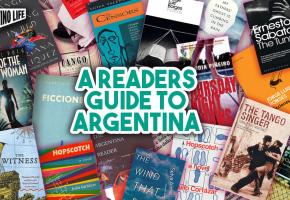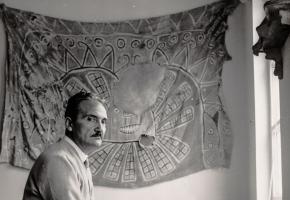1 – Rialto, 11 by Belén Rubiano. Published by Libros del Asteroride. One day in early autumn 2002, the light in a small and secluded bookstore in the Plaza del Rialto in Seville went off, without noise or hardly any goodbyes, definitely. Its founder had started selling books ten years earlier in other bookstores, where she learned many things in addition to her trade. In the succession of experiences that make up these delightful partial memories, Rubiano shares with readers the uncompromising vocation that led her to establish herself as a bookseller in a corner of the map. And he does it with humor and with candid sincerity, because apart from the satisfaction of working among books and readers, we understand from the beginning that nothing is as he had dreamed of and that there is no lack of storms, swells and bitter disappointments in the trade. But there are also, fortunately, delusional moments, priceless lessons and great joys. Above all, the value of these pages, which the reader will go through between free laughter and the deepest empathy, lies in the vitality and very personal style with which Rubiano tells us about his particular devotion to books and how one can get there to risk any security to pursue a dream.
2 – Los Gatos Salvajes de Kerguelen by Marta Barrio García-Agulló.
A group of young researchers travel to the Islands of Desolation, off Antarctica, to record the effects of climate change on fauna and flora. It is a hostile territory, completely isolated from civilization and battered by hurricane-force winds, where countless shipwrecks and tragedies have occurred since its discovery in 1772. Forced into a total disconnection, scientists, dominated by unsuspected drives fueled by the inevitable confinement, they will find themselves confronted with themselves and others in an icy and ruthless south as the human condition itself. While studying the signs that predict the arrival of the end of the world as we know it, this group of scholars will witness a series of mysterious disappearances, while icebergs, threatening and pre-eminent tragedies, are outlined on their geographical horizon and vital.
3 – Caperucita en Manhattan by Carmen Martín Gaite. Published by Siruela.
Sara Allen is a ten year old girl who lives in Brooklyn, New York. Her greatest wish is to go to Manhattan alone to bring her grandmother a strawberry cake. The grandmother of this modern Little Red Riding Hood has been a music hall singer and has been married several times. The wolf is Mr. Woolf, a billionaire pastry chef who lives near Central Park in a pie-shaped skyscraper. But the magic thread of this story centers on Miss Lunatic, an ageless beggar who lives by day hidden in the Statue of Liberty and who comes out at night to mediate human misfortunes or, if necessary, to give away an elixir capable of overcoming fear.
4 – pequeñas mujeres rojas by Marta Sanz. Published by Anagrama.
Marta Sanz closes the trilogy of the detective Arturo Zarco dissecting the stories about memory: a crime novel that prolongs the possibility of the political novel. Paula Quiñones arrives in Azafrán to locate graves from the Civil War. As soon as she puts her lame foot in town, she feels the sky encapsulate over her and an invisible rubber pulls her body away from her destination: the Beato hotel, located next to a sign that reads "Azufrón" . That summer Paula will correspond with Luz, detective Zarco's mother-in-law and, together with him, one of the main characters in Black, black, black: she will tell him about her love affairs with David Beato in a beautiful garden. It will also reveal your fears regarding the existence of an informer and relate the family legends that feed the stomach of the hotel. Meanwhile, Analía, David's mother, lovingly cares for Jesús Beato, sweet patriarch who has just turned a century, and attends to the messages that he blows in her ear ... And, with Zarco absent, living the adventures of a good detective no never marries, a gelatinous and endogamous atmosphere threatens to crush Paula. The expressionist western is muddied to the extreme of a terror inhabited by animals that could speak but remain mute; a girl who wanted to be a singer and a road pawn; and a famished legion, sarcastic and pious, rotten and hilarious, of ghostly lost children and dead women who demand, against the sign of the times, "read slowly ...”
5 – Mujeres de la posquerra by Inmaculada de la Fuente. Published by Silex.
Carmen Laforet won the first Nadal Prize for her novel Nada five years after the Civil War officially ended. A work that astonished his generation and that has become an accurate portrait of the emptiness and inanity of the postwar period and its suffocating moral landscape. Carmen Laforet, an author as dazzling as she is enigmatic, opens this gallery of women writers and creators who travel through the postwar period and the nascent democracy and reflect the pain and desolation of the 1940s, as well as boredom and defeat. But also hope for the future, the incipient signs of change, nonconformity in the face of the rigidity of the society of the fifties, the search for identity and the fight for one's own ideas. Some from the inside, such as Ana María Matute, Carmen Martín Gaite, Joseἀna Aldecoa and Dolores Medio; others from exile, such as Rosa Chacel, María Zambrano, María Teresa León, Mercè Rodoreda, Concha Méndez or Maruja Mallo, constitute a mirror of the women of the time. Diving into their work and their biographies, you can discover the time in which they lived and, at the same time, the keys to their works. Postwar Women is thus a double literary and historical essay, a postwar fresco that reveals their terrifying darkness on the one hand, but also the luminous trace of these women who, in addition to bequeathing their work to us, never resigned themselves.
6 – La escritora vive aquí by Sandra Petrignani. Published by Gatopardo Ediciones.
The Writer Lives Here is a long journey through the homes and places of some of the most important writers of the twentieth century. From Grazia Deledda's Sardinia to Marguerite Yourcenar's America, from Colette's France to Alexandra David-Néel's Orient, from Karen Blixen's Denmark to Virginia Woolf's England. A pilgrimage through the house-museums of all of them, in which, through the furniture, objects, rooms and gardens, its author, Sandra Petrignani, introduces us to the lives of these women, their secrets, fears and frailties. Entering their houses is entering their lives, as if the protagonists themselves opened their doors to us and showed us their most intimate world. The journey as reconnaissance, the reconstruction of a territory delimited by walls, within which "the voice of things" can be heard, a voice that Petrignani has managed to turn into stories that reveal to us how these writers who contributed to enhance the history of European literature.
7. – Mujeres que leían by Rosa Huertas. Published by tres hermanas.
Women who read could have been equally titled women who sang, women who painted, women who played the piano or women who danced. All of them, the women who preceded us, had concerns, they dreamed of being something more than what destiny had marked them. It is the story of the author's mother, of the women in her family, but it could also be the same story of many who lived through the postwar period, a difficult time in which they could hardly be anything other than wives and mothers. But they kept a treasure inside: a voice, a gift, a desire to create that in many cases they hid inside their houses and their hearts. She, the mother, managed to make one of her little dreams come true, even if it was seventy years later.
8. – Monechka by Marina Palei. Published by Automática Editorial.
Since adolescence, Mónechka has always shown an unmatched talent for enjoying worldly pleasures; This precocious ability, which reached the highest levels in its relationship with men, marked from the beginning the course of its existence. Monka threw herself into life bare-chested, and it welcomed her into a whirlwind of excesses and passions that would lead her to travel the paths of happiness and pain alike. Marina Palei has created a character difficult to forget who, like a modern Cabiria fresh out of Fellini's film, is ready to seduce the whole world, with total disregard for social or moral conventions and who is able to overcome any misfortune by clinging to just a tiny glimmer of hope.
9. – Sumar by Diamela Eltit. Published by Periférica Editorial.
Sumar recounts a march, which seems endless, eternal, of street vendors advancing through the city and through History towards «the coin» (with lower case letters, playing with the relationship between the center of power, the Palacio de La Moneda, and that « little coin »that some voices ask). In this demanding novel, popular language and educated language coexist: both forms come together to give tension to the text. Even political tension. The names of some of the main characters refer to different fighters and workers in Chile at the beginning of the 20th century, and the assembly character of the story reminds us of some necessary practices not so far back in time. Hopeless, the workers of the world repeat daily the tragedy of capitalist exploitation. This usufruct of all human capacity is intensified when the subject is his own exploiter; such is the case of street vendors, who take the floor in Sumar to meet with other citizens vexed by a state order that seems divine and begin their march.
10. – La Tierra Hueca by Beatriz García Guirado. Published by Aristas Martínez.
The Hollow Earth is an adventure novel and an initiatory tale, in which following in the footsteps of the other makes him our ancestor. A work that follows in the wake of "The mines of King Solomon" or "Journey to the center of the Earth", and that immerses us in a magical universe in the only way it can be done: with the language of myths. Beatriz García Guirado constructs with humor and rawness a journey of strange and captivating beauty through the last strongholds of natural life and the disasters caused by human ambition that forces us to question our notion of "savage." While exploring the links between love and betrayal that lie under the mantle and crust of everything.
11. – Juegos reunidos feministas by Patricia Escalona. Published by Temas de Hoy.
Do you consider yourself a feminist? So this book is for you. Don't you consider yourself a feminist? Then this book is for you too.
At this point it is impossible to avoid the subject. It doesn't matter if your environment is that of gender activism or that of the Madrid club in your city, we bet our ovaries that in the last year you have discussed feminism at least once a month. Sometimes you will have come out with things clearer. Sometimes you will have ended up a little confused. Sometimes angry. But never indifferent. That is why we have made this book. An activity book full of games and explanations so that your discussions gain material for laughter and anger, but above all in depth. Through the three levels it is divided into, you will traverse the theoretical concepts that shape feminism and recognize the effects of patriarchy on your day. Feminist Reunited Games is a book to have fun alone or with someone, but it is also a provocative journey towards change. Here we have come to laugh, yes. But we have also come to fight. And if you still don't believe it, play and see.
12. – Acá todavía by Romina Paula. Published by Entropía.
The coordinates on which this novel is built are stated from the title. Here: a space that only those who inhabit it recognizes, and still: that no time, that of yet, of now almost or until ... Andrea, protagonist and narrator, attends the death of her father and goes into the walled space of the present, although traversed by secret and not so secret passageways: memories towards which the future also slides.
Romina Paula's writing attempts against ontological dominance and arrogance. In this, as in his previous novels, he makes the language of the mutable, the unimpressible, and the indefinable. His characters are not, but they are being and they acquire thickness thanks to the uniqueness of a voice whose roots are intertwined with pain and darkness, lightness and a sense of humor. They move in a zigzag, they search, they ask, they are on the side of those who prefer not to know.
That is why the sounds of his narrations contain the chromatic volume of speech or the flow of thought, modulations that the author listens carefully. In that porosity, that surrender towards what is not given, towards what is to be done or discovered, in that freedom, resides the strength of his style.
13. – Cuentos para niños by Mercé Rodoreda. Published by Siruela.
Tales for children collects for the first time in Spanish the children's stories of Mercè Rodoreda, the lesser-known facet of her work. Originally published in La Publicitat newspaper and Moments magazine between 1935 and 1937, they are incredibly innovative texts, in which the author plays with the limits of reality and fiction and proposes a journey full of emotions to a natural and magical universe. Populated by animals and people, but also by fairies, witches or mermaids. In short, these stories always offer new and original perspectives that make the traditional imaginary even more attractive.
14. – Cosas nuestras by Ilu Ros. Published by Lumen.
Enough Instagram. Talk with your grandmother.
A fascinating book that reclaims a dialogue with our elders, the pioneering women of popular culture, memories, and love for our land and our things. On any given Sunday, a young woman sits and goes through Instagram stories while her grandmother goes about doing household chores. A song by Rosalía and a mention of Concha Piquer trigger a conversation in which pop culture, folklore, and the memory of transgressive characters who had to fight for their rights in an old-fashioned Spain, intertwine with references from current generations. Thus, Lola Flores, Rocío Jurado, Miguel Molina, the Spice Girls, Nathy Peluso, and Federico García Lorca constantly enter and exit the scene, but we also see memories from the countryside; we see the difficulties of those who had to emigrate during the dictatorship, and also those that young people still must face in order to find work or make themselves heard.
A moving book that invites us to reconnect with our elders and discover their stories so that they stay with us.
15. – Dicen los Síntomas by Bárbara Blasco. Published by Tusquets.
Although Virginia has never had a good relationship with her father, she feels compelled to visit him daily and keep him company when he is admitted seriously ill to a clinic in Valencia. For her, obsessed with ailments, symptoms are more sincere than words. In that hospital room, her ties with her mother and sister are put to the test, precisely at a critical moment in Virginia's life, for whom motherhood is becoming an emergency. A new patient, an enigmatic and not unattractive man, then occupies the neighboring bed. At first Virginia barely exchanges a few words of courtesy with him, but little by little, the two establish a complicity alien to the asepsis of the hospital, and end up creating a small shared space, a place to take shelter. And in which perhaps, when all is lost, something unexpected and authentic will emerge.
All these books are avilable at Romancero Books https://www.romancerobooks-store.co.uk/
















